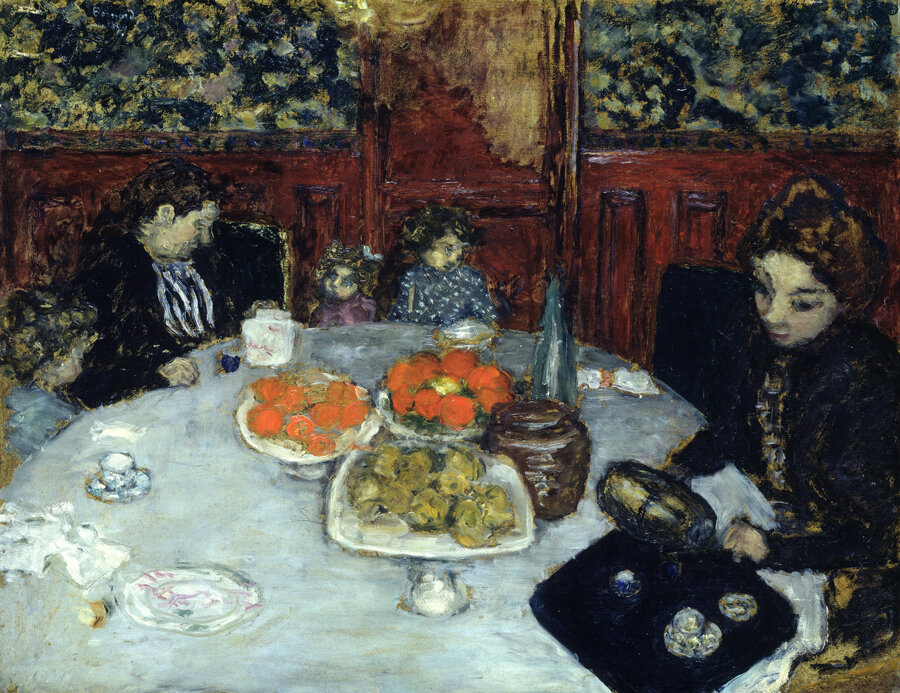Art of Omission by Anna Johnson | the Sydney Morning Herald | March 21-22, 2020
Tossing aside my camera, I rediscovered the joy of “slow looking”.
A year ago, I made an art pilgrimage to see the CC Land Exhibition – Bonnard at The Tate Modern in London. Two days shy of the show’s close, I turned up at the museum at night with just two hours to look at the paintings. Thirty hours in transit generated the sort of jetlag that makes you hallucinate.
The wall felt convex, and the tiny brushstrokes seemed to pulse like the fur of a psychedelic animal. Because of the pressure of time and the cost of the journey, I immediately and unthinkingly pulled out my phone and photographed very painting that I thought was “important”.
Like the doomsday prepper, I was stuffing memories and colour into my camera like fruit into a jar. My lens gorged. I grasped at details, the ornaments of the frame, the blur of trees painted a hundred years ago. And as I left the building, sated, visually exhausted, I felt a smug sense of accomplishment. I had “bagged” Bonnard! A few days later, I tried to recall the best of the artworks I had seen and all I could remember was the last painting in the show. It was Pierre Bonnard’s fuzzy and exquisite final artwork, The Studio with Mimosa painted between 1939 and 1946. I think that I remembered this painting just because it was yellow.

A week later, in Paris, there was another exhibition of the Nabi group of artists featuring Bonnard. Again, many art lovers competed for the most iconic captures with iPhones. It was a high-brow scrum! From that show I remember a triptych by Bonnard and I think it stood out because it was green.
At the Louvre the next day, there was a swarm in front of the Mona Lisa, who was being shot like she was an actress on a red carpet. This wasn’t news. I encountered the dawn of mass tourism at the Louvre about 30 years ago, when I saw a large group of travellers storming the Renaissance wing. This was before phone cameras or social media. Before I used my own camera to try and steal the soul out of art.
After the Bonnard trip, I spent hours scrolling through my trove of snaps. It was like compressing the contents of an art book into a handbag. Pushed for time, I had skidded through each show speed-shouting. What, I wondered. Did I really retain from that experience? The mere proof of being there? In a way, I was more like shopping than studying. A sort of art bulimia that destroyed my subtle tastes. As Leonard Cohen sang mournfully: “I came so far for beauty, I left so much behind”.
Chastened, I decided to see Matisse & Picasso at the National Gallery in Canberra technologically naked. Without even a notebook. Just my eyes. The first thing I noticed was that the people who spent the most time with the work were not taking photos. They were dawdling, pondering and scrutinising. “Slow looking”, as the curators at the Tate now call it. Like an art mating dance, they rubbed their chins. They came close and stepped away. It all evoked a 1970s Woody Allen movie, in a good way.
Was this a form of museum mindfulness? I was certainly dumped into the power of now. There would be no opportunity to catch up later looking at cropped details. This was IT – the moment committing to memory. The colours and pigments looked bright as if they had just been applied. I could see the drag of Matisse’s pencil line gouged into the paper at speed. I appreciated the patience of a still life, the tenderness of plums and lemons sitting on a violet tablecloth.
With hands free, I felt a greater sense of reverence. I had only ever seen the Picassos in photographs. Yet plates on a screen or in an art book change their stripes and often paintings look more graphic in print. In the round, super famous works seemed more human, more open to error and creative doubt. I probably spent forty minutes walking through this show, but without making a record of it, time expanded. There was no distance between the tip of my nose and the rouged lips of the actress by Picasso. The barrier of history was bashed in by complicity. As always, the clock was ticking. The kids were in the café. I felt a stab of longing for the works I would never see again. Many from private collections and remote museums.
As insurance against forgetting, I bought the catalogue. But if I close my eyes, I can still summon the colours and the forms. There is a profound difference between looking and seeing. Without my camera, I found it.
FIRST PERSON ARTICLE | Anna Johnson | The Sydney Morning Herald 21- 22 March 2020